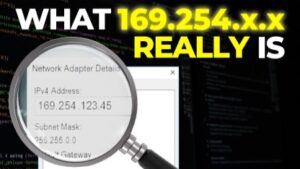Packet Tracer file (PT Version 7.1): https://bit.ly/2L3PvrR
Get the Packet Tracer course for only $10 by clicking here: https://goo.gl/vikgKN
Get my ICND1 and ICND2 courses for $10 here: https://goo.gl/XR1xm9 (you will get ICND2 as a free bonus when you buy the ICND1 course).
For lots more content, visit http://www.davidbombal.com – learn about GNS3, CCNA, Packet Tracer, Python, Ansible and much, much more.
#CCNA #PacketTracer #CCENT
Subnetting allows you to create multiple logical networks that exist within a single Class A, B, or C network. If you do not subnet, you are only able to use one network from your Class A, B, or C network, which is unrealistic.
Each data link on a network must have a unique network ID, with every node on that link being a member of the same network. If you break a major network (Class A, B, or C) into smaller subnetworks, it allows you to create a network of interconnecting subnetworks. Each data link on this network would then have a unique network/subnetwork ID. Any device, or gateway, that connects n networks/subnetworks has n distinct IP addresses, one for each network / subnetwork that it interconnects.
In order to subnet a network, extend the natural mask with some of the bits from the host ID portion of the address in order to create a subnetwork ID.
An IP address is an address used in order to uniquely identify a device on an IP network. The address is made up of 32 binary bits, which can be divisible into a network portion and host portion with the help of a subnet mask. The 32 binary bits are broken into four octets (1 octet = 8 bits). Each octet is converted to decimal and separated by a period (dot). For this reason, an IP address is said to be expressed in dotted decimal format (for example, 172.16.81.100). The value in each octet ranges from 0 to 255 decimal, or 00000000 – 11111111 binary.
Here is how binary octets convert to decimal: The right most bit, or least significant bit, of an octet holds a value of 20. The bit just to the left of that holds a value of 2^1. This continues until the left-most bit, or most significant bit, which holds a value of 2^7.
Transcription:
Okay, so that means I need to configure router 4 and the Internet router.
So I’ll do router 4 first.
interface serial0/1/0
that’s this interface
In the real world, you could use commands such as show cdp neighbors
to verify neighbor connectivity if you’re not sure how interfaces are connected and you want to verify interface connectivity.
So this is definitely the local interface connected to the Internet router.
So on that interface
interface serial0/1/0
ip address 192.168.1.117
First IP address in subnet is 1 more than the subnet address and because this is a /30 the last IP address is simply the next IP address in that subnet.
So interface serial 0/2/0
ip address is 192.168
we’re in this subnet
So it would be 118, so 1.118 /30 mask
So can we ping the other side? Yes we can and we can see that an OSPF neighbor relationship has been established.
So back on router 4, OSPF neighbor relationship is established.
We’ve learned a default route via the Internet router.
So ip domain-lookup
ip name-server is going to be Google, ping Cisco.com. We can ping Cisco.com.
Can we ping Facebook.com? Yes we can.
So I’ve configured the WAN links and updated them per the new subnets that we have.
The next step is to configure this subnet. So we need to use this subnet for this local area network.
Now the way that you work out first host, last host broadcast, is once again, first host is simply the next IP address after the subnet.
So binary, it would look like that, host portion is set to 0s except for the last bit which is set to 1, but in decimal it simply add one to the network portion.
The broadcast would be one less than the next subnet.
So the next subnet is 80, so the broadcast would be 79. And to work out the broadcast portion, you fill the host portion with binary 1s. And again, we can verify that we’ve done it right 79.
It looks like this in binary. So 0100 followed by 4 1s.
So that’s correct. And then, the last host in the subnet is 1 less than the broadcast address, so 78.
And if you want to work it out in binary, you set the host portion to binary 1s except for the last bit which is set to 0. Host portion for subnet looks like that filled with 0s, broadcast is filled with 1s, first host is filled with 0s except for the last bit which is set to 1, last host has it filled with 1s except for the last bit which is set to 0.
So the last IP address and the subnet which we need to use on router 4 is 79, so 192.168.1.79














